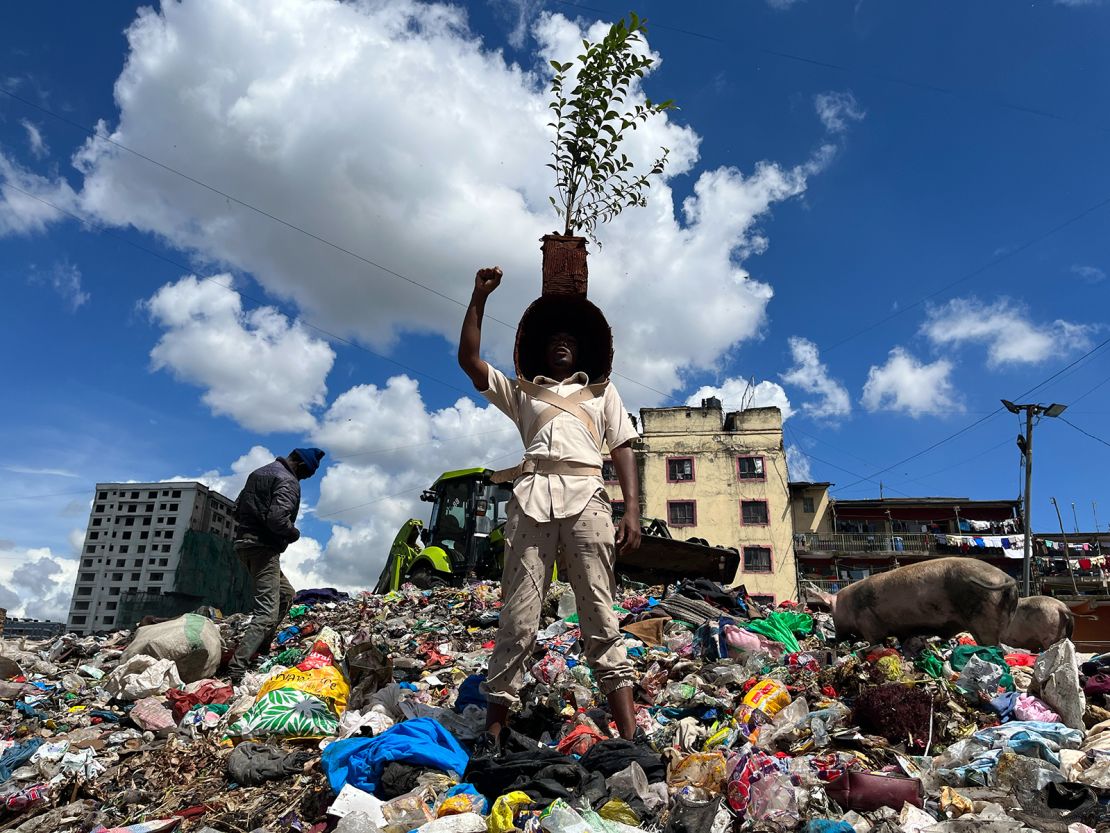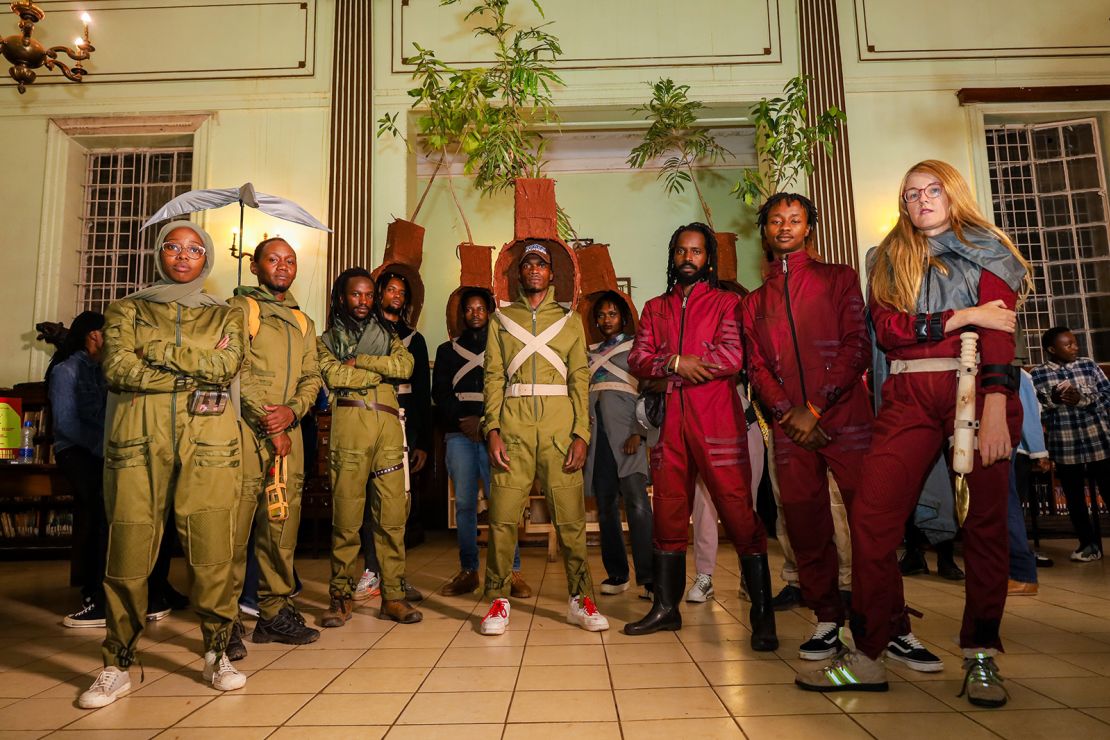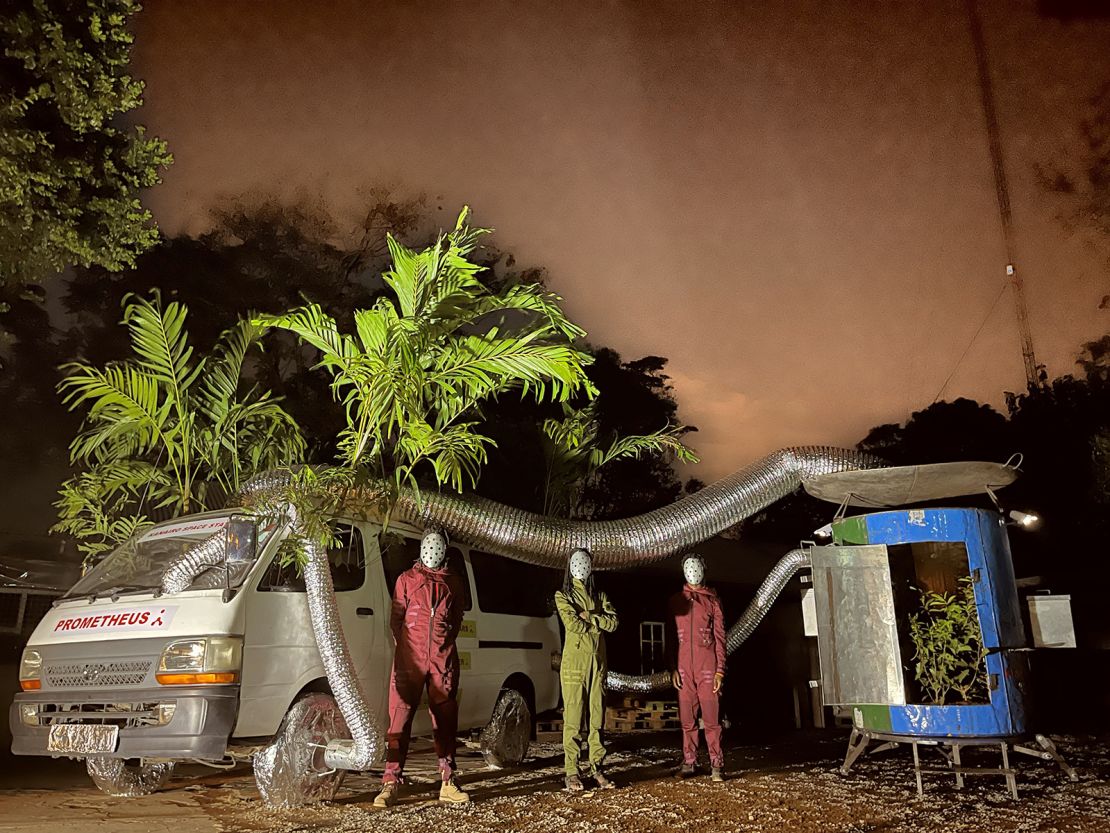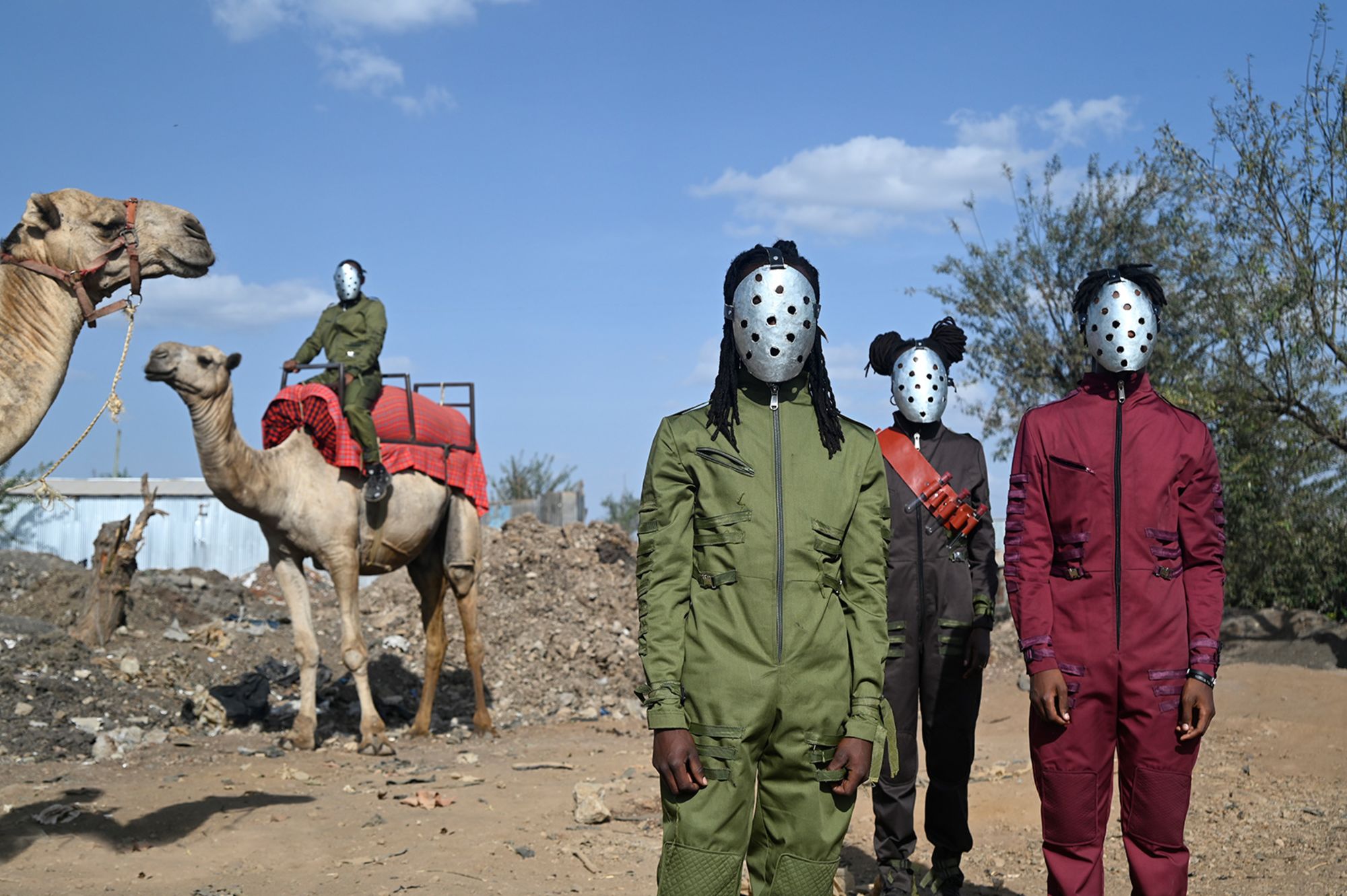Decked out in specially designed “spacesuits,” a group of artists has been going from neighborhood to neighborhood in Kenya’s capital, rewilding the city with tree seedlings and seed balls. It’s part of the “Nairobi Space Station,” project which aims to effect what its artists describe as “hyperlocal” change; its name is a wry comment on the controversial efforts of billionaires wanting to create settlements on the Moon or Mars at a time when Earth itself is in dire need of support.
Led by Nairobi-based art collective Kairos Futura, the ambition of the project – which began in March – was to use collaborations with local artists, designers, scientists and environmentalists to imagine the city’s future and support sustainable change. Kairos Futura blurs lines between art, design, community building and environmental activism, and has already carried out its “Space Station” projects in Lamu, Kenya, as well as Aspen, Colorado in the US (where one of its members grew up).
Nairobi struggles with significant environmental issues such as problems with water pollution, as well as a loss of tree cover. The collective undertook field research trips around the city to understand its specific problems. As well as tree planting, the group delivered nature and community-focused interventions, including building a water filtration system.

In the large slum of Mathare, the collective collaborated with community organizer Stoneface Bombaa (real name Brian Otieno Akoth) on a project of rewilding – in which nature is reintroduced to places where it has been lost. “In Mathare, there was something like 20 trees for a community of 250,000 people,” Kairos Futura director Ajax Axe (who works alongside co-directors Abdul Rop and Lincoln Mwangi) stated over video call. The absence of tree cover in Mathare means a lack of shade in a city which regularly experiences very hot days and a high UV index.
However, the team was aware that tree planting in certain cases had become a tokenistic action in Kenya. “It’s something politicians do – go into a neighborhood and plant one tree,” said Axe. “It’s become a symbol of inaction.” Kairos Futura and Stoneface wanted to change this, and plant trees in a way that would be meaningful both for the environment and the community.
The team added a performative ritual to the planting process: Stoneface designed futuristic helmets with young trees attached, turning a group of people who wore them into what the collective called a “nomadic forest” as they undertook a procession to the planting site. The performance allowed local residents to “consider the community and emotional significance of planting trees,” said Axe. The team has now planted 1,000 tree seedlings and seed balls in the area – with plans to do 2,000 in total.

In another part of the capital, in the informal settlement of Mukuru, Kairos Futura also joined forces with local youth arts organization Wajukuu and independent biologist Willy Ng’ang’a to create a mini-wetland that filters pollution from the Ngong River, which runs through the settlement. “Mukuru is not connected to the municipal waste system, so all the waste goes into the river – it’s not usable at all,” explained Rop over video call.
The wetland was constructed in a riverside garden that Wajukuu had created in order to enable residents to grow their own food, but the river was so polluted the organization had to buy water from elsewhere to nurture the plants. Now, however, the Kairos Futura-led team has created a natural filtration system via a series of large cement vessels filled with a reed bed system which cleans the river water for use in the garden. As in Mathare, the artists have also been planting tree seedlings and seed balls.
Other Nairobi Space Station projects have included the creation of a sculptural playground for children in Mukuru, where there was a lack of play space, and “The Nairobi Cabinet” art installation aiming to raise awareness of environmental degradation by illustrating the pollution found in the city’s water and soil.

In part, Kairos Futura wants to explore the role artists can play in society. “Artists have so much more to offer communities than just making status symbols for people to put on their walls,” said Axe. “As creators, we have the ability to reimagine the world and create something that people can experience or see that inspires them – so why don’t we get out into the community and do that?”
The collective had initially planned to undertake its fourth Space Station project in another city, but the team realized that nurturing long-term positive change is vital – and is therefore staying in Nairobi for the foreseeable future.
“In order to make this work valuable, you really need to invest into the longevity of the concepts that are developed,” said Axe.
“We don’t want to plant a tree and walk away,” added Rop. “You have to keep watering the tree and see if it grows.”



